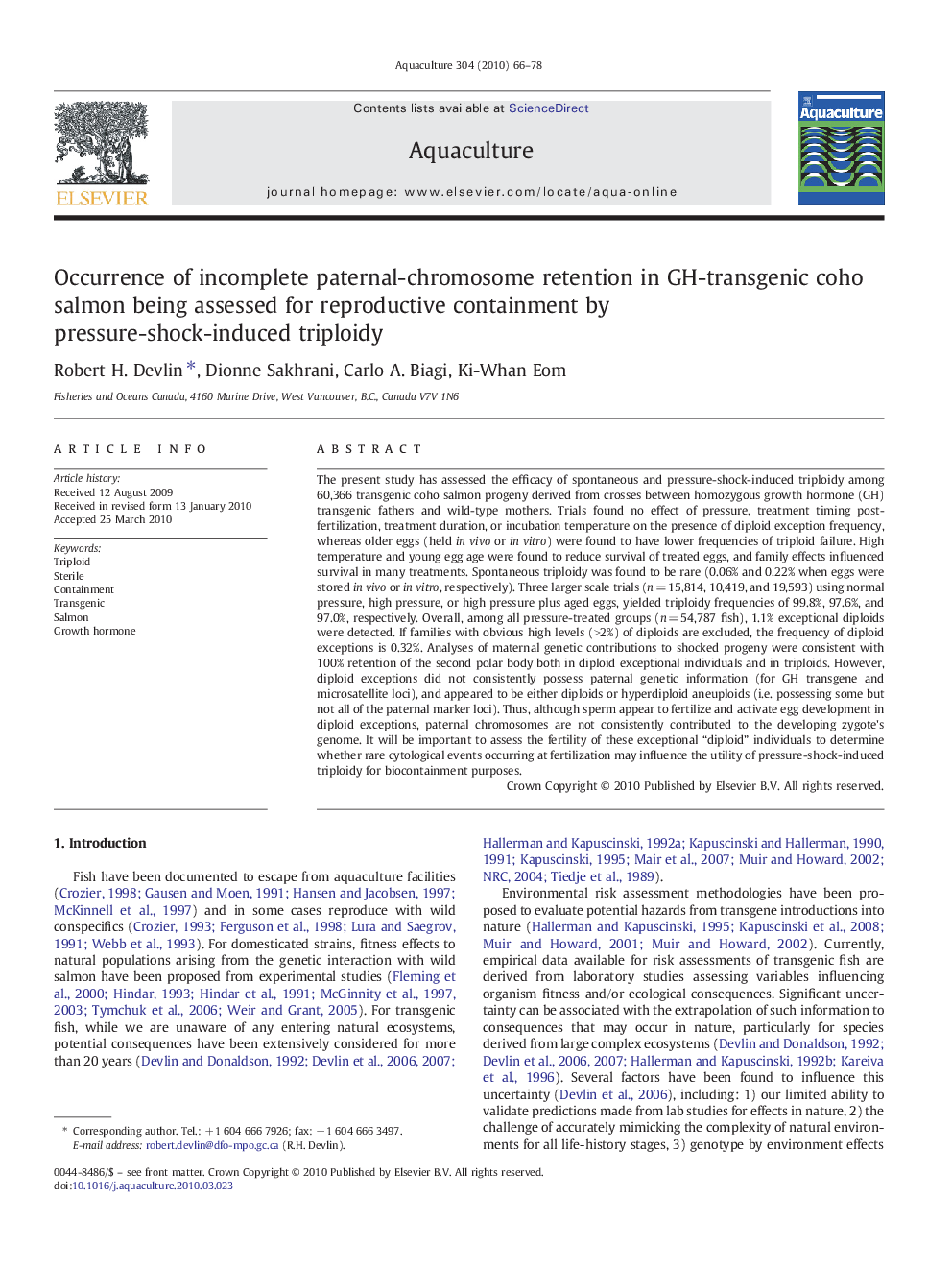| Article ID | Journal | Published Year | Pages | File Type |
|---|---|---|---|---|
| 2423647 | Aquaculture | 2010 | 13 Pages |
The present study has assessed the efficacy of spontaneous and pressure-shock-induced triploidy among 60,366 transgenic coho salmon progeny derived from crosses between homozygous growth hormone (GH) transgenic fathers and wild-type mothers. Trials found no effect of pressure, treatment timing post-fertilization, treatment duration, or incubation temperature on the presence of diploid exception frequency, whereas older eggs (held in vivo or in vitro) were found to have lower frequencies of triploid failure. High temperature and young egg age were found to reduce survival of treated eggs, and family effects influenced survival in many treatments. Spontaneous triploidy was found to be rare (0.06% and 0.22% when eggs were stored in vivo or in vitro, respectively). Three larger scale trials (n = 15,814, 10,419, and 19,593) using normal pressure, high pressure, or high pressure plus aged eggs, yielded triploidy frequencies of 99.8%, 97.6%, and 97.0%, respectively. Overall, among all pressure-treated groups (n = 54,787 fish), 1.1% exceptional diploids were detected. If families with obvious high levels (>2%) of diploids are excluded, the frequency of diploid exceptions is 0.32%. Analyses of maternal genetic contributions to shocked progeny were consistent with 100% retention of the second polar body both in diploid exceptional individuals and in triploids. However, diploid exceptions did not consistently possess paternal genetic information (for GH transgene and microsatellite loci), and appeared to be either diploids or hyperdiploid aneuploids (i.e. possessing some but not all of the paternal marker loci). Thus, although sperm appear to fertilize and activate egg development in diploid exceptions, paternal chromosomes are not consistently contributed to the developing zygote's genome. It will be important to assess the fertility of these exceptional “diploid” individuals to determine whether rare cytological events occurring at fertilization may influence the utility of pressure-shock-induced triploidy for biocontainment purposes.
